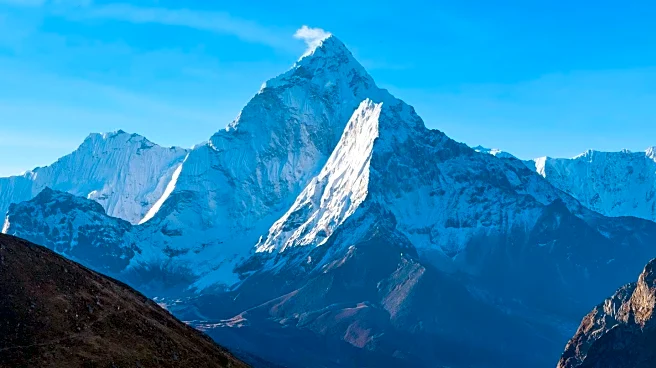What's Happening?
Nepal has announced that 97 of its Himalayan mountains will be free to climb for the next two years. This initiative aims to boost tourism in remote areas of the country, particularly in the Karnali and Sudurpaschim provinces. These regions are among Nepal's poorest and least developed, and the government hopes to attract more tourists and mountaineers by waiving climbing fees. The decision comes as permit fees for Mount Everest, the world's highest peak, are set to increase to $15,000 during peak season starting in September. This marks the first fee hike in nearly a decade. The move is part of a broader effort to highlight Nepal's unexplored tourism products and destinations.
Why It's Important?
The initiative to make 97 mountains free to climb is significant for Nepal's tourism industry, which heavily relies on mountaineering as a source of revenue. Last year, climbing fees generated $5.9 million, with Everest accounting for the majority. By promoting lesser-known peaks, Nepal aims to diversify its tourism offerings and stimulate economic growth in underdeveloped regions. This could create jobs and strengthen local economies. However, the success of this initiative depends on improving infrastructure and connectivity to these remote areas, which currently face challenges in accommodating an influx of climbers.
What's Next?
Nepal's parliament is considering a new law requiring climbers to have previously summited a mountain over 7,000 meters before attempting Everest. This could make the free-to-climb peaks in Karnali and Sudurpaschim ideal training grounds. The government may need to address infrastructure and community readiness to handle increased tourism. Additionally, the impact of the fee increase on Everest permits will be closely monitored, as it may influence climbers' decisions and shift interest to other peaks.
Beyond the Headlines
The decision to offer free climbs on 97 mountains raises questions about environmental sustainability and the capacity of these regions to handle increased tourism. Overcrowding and environmental concerns have plagued Everest in recent years, and similar issues could arise in these new areas. The initiative also highlights the need for balanced tourism development that respects local communities and ecosystems.















